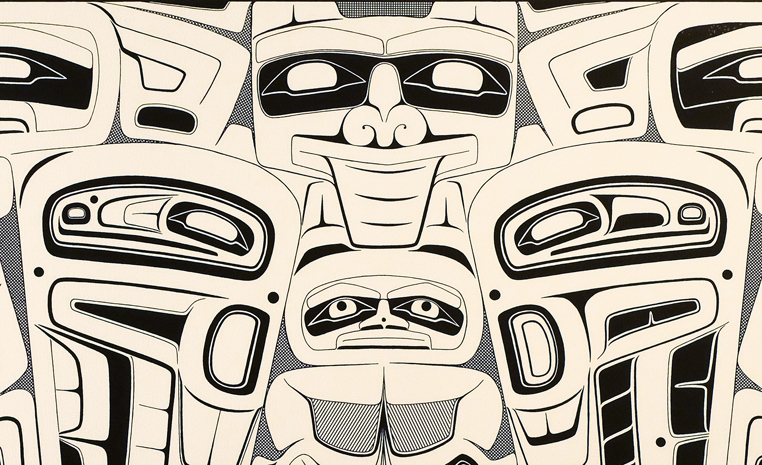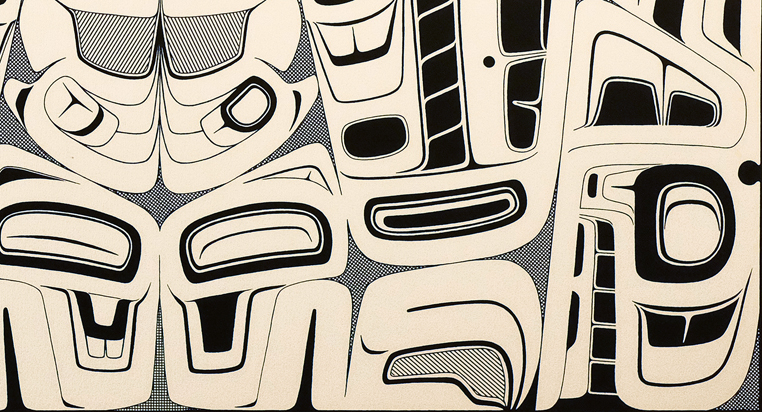Design for an Engraving (1976)
EXHIBITION:
In The Den: Digital Exhibition on BearsThis one-color serigraph, originally printed on glossy metallic stock, and an early work from 1976, is in the strict graphic art style of the northern Northwest Coast. It depicts three important crest or totemic animal figures and, though designed primarily as a decorative piece, portrays at least one significant mythical event.
In the upper corners is the head of Thunderbird who shakes his wings, making thunder. These sweep down to his tail sections which join in the bottom center. The bird’s doubled legs and talons connect across the bottom. On each side in the lower corners is the head (eye, nostril, teeth and blowhole) of Killer Whale or Whale who hangs suspended with tail, dorsal fin (flipped down) and pectoral fin beneath the beak of Thunderbird . This depicts the mythological strength of Thunderbird who, it is said, plucks whales from the sea at will.
Center top is the head and flanking claws of Grizzly bear an important crest or clan symbol among many Northwest Coast tribes. His tongue is extended in traditional fashion. In the Center of the print is the body or chest of the bear with upturned hind legs and claws. In traditionally stylized fashion this body part is elaborated into and additional creature (an infant bear or unspecified animal) with face and ears.
Though appearing symmetrical all the typically elaborating details of wings, joints, tails, claws, fins and faces are each rendered differently producing an entirely asymmetrical design. This was typical of some old native art works in boxes, bowls, housescreens etc., adding a sense of discovery and surprise throughout.
Engraving on the Northwest Coast:
This print issued in both a numbered and unnumbered series on silver and beige art stock represents the traditional division and emphasis of space on works in silver and gold. Although foreign to the coast as art materials before European contact, these precious metals were in use as early as circa 1820 – and are still used today – for sumptuous bracelets, pendants, spoons and miniature boxes. Solid black areas represent those spaces which would be chased or indented (in some cases with applied black jewelers rouge) in an actual engraving.
-Barry Herem



